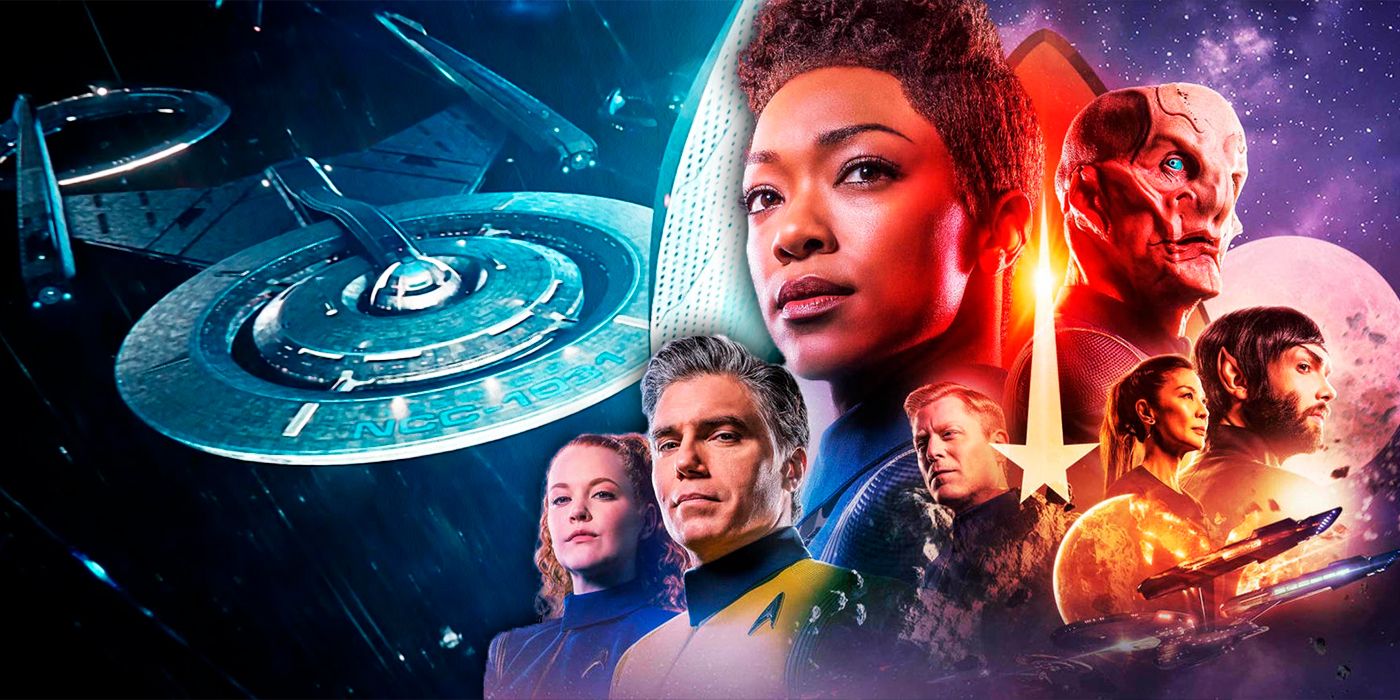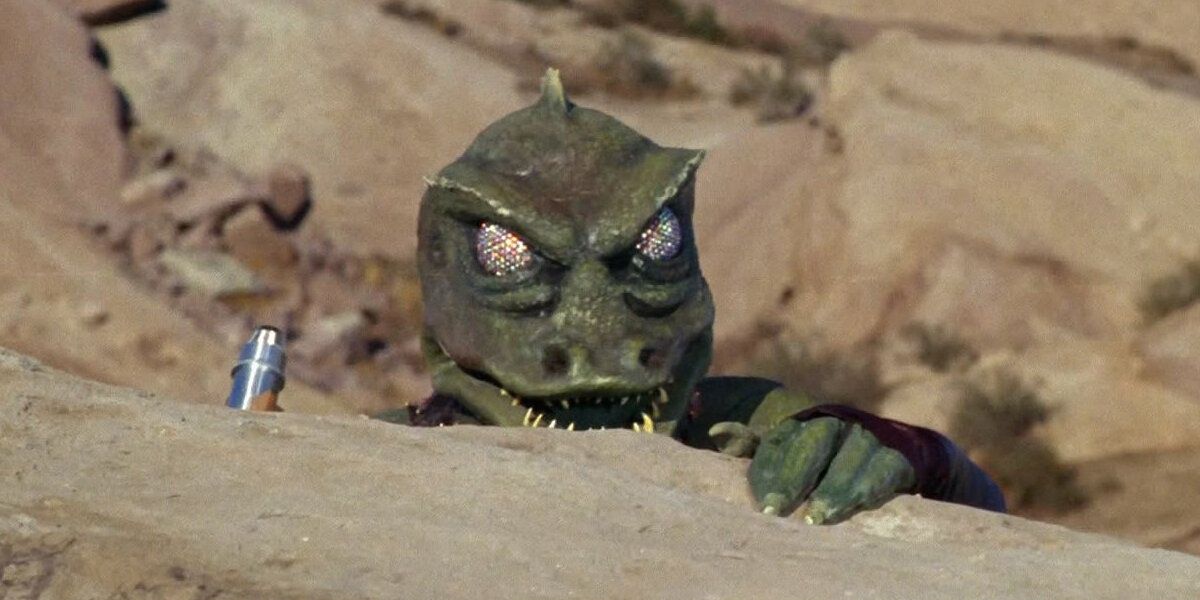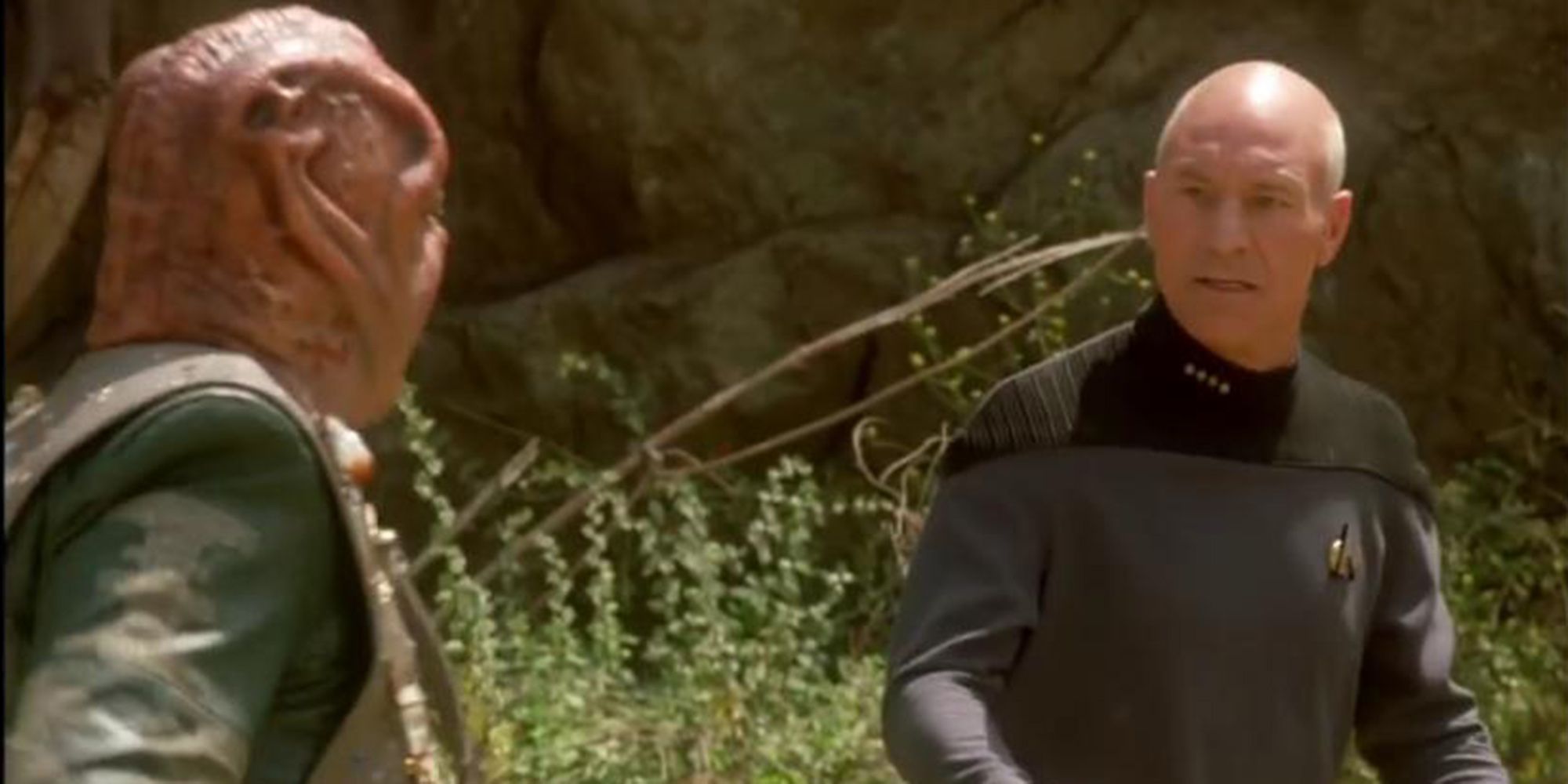WARNING: The following contains spoilers for Star Trek: Discovery Season 4, Episode 10, "The Galactic Barrier," streaming now on Paramount+.
Star Trek has always been a science fiction universe packed with extraordinary technology, from transporters to warp engines, but one of the more subtly useful advances among Starfleet's arsenal is the universal translator. Capable of deciphering virtually any verbal language instantly for those wielding it, the translator has been a staple in the Star Trek franchise since The Original Series and continues to be used by Starfleet in the 32nd century as revealed by Star Trek: Discovery. But as Captain Michael Burnham leads her crew on a vital diplomatic mission, a stark reminder of the translator's glaring limitations has resurfaced.
The translator was introduced in the TOS Season 1 episode "Arena," given to Captain Kirk and the captain of a rival Gorn vessel as they were stranded on a remote planet by the Metrons and ordered to fight to the death. The translator allowed Kirk and the Gorn to communicate with one another as the showdown continued. A proper origin story for the universal translator was provided in Star Trek: Enterprise, with the translator depicted as an experimental device created by Starfleet and attached to communicators offering text translations to users. By the start of Discovery, decades later in the timeline and approximately a decade before TOS, translators became more commonplace and were installed directly into most Starfleet communicators.
As the Discovery prepares to personally escort a Federation diplomatic delegation beyond the borders of the Milky Way Galaxy to formally make contact with the mysterious Species 10C, they are unsure how to properly communicate with the civilization responsible for creating the devastating dark matter anomalies. Given that Species 10C remains a complete unknown, from physical appearance to level of sentience, Starfleet is uncertain whether the civilization even employs a verbal or written language to communicate, speculating they could communicate entirely through nonverbal cues or pheromones. With this in mind, Starfleet decides to include linguistics scholars in the delegation to help facilitate an accurate, full communication if necessary.
This isn't the first time in Star Trek history that Starfleet has faced limitations with its universal translator due to these kinds of linguistic complexities. The memorable Star Trek: The Next Generation Season 5 episode "Darmok" introduced a species that communicated entirely through cultural metaphors from their history. Though the translator could convert the words being said, the metaphors were lost on Captain Jean-Luc Picard until he learned the cultural references to understand. By the time of Star Trek: Lower Decks, the translators were modified to accommodate this foible though not without the occasional hiccup.
With the Discovery successful in emerging from the other side of the galactic barrier, exiting the Milky Way Galaxy to reach its ominous destination, first contact and all the communication challenges that come with it are right around the corner. The universal translator has facilitated diplomatic envoys throughout Star Trek history but, far outside of the galaxy, this longtime device may prove useless in the face of the unknown this time. Species 10C is capable of unleashing a singularity powered by dark matter and deploy it to the other side of the cosmos but this is no guarantee first contact with the Federation will proceed as planned.
Created by Bryan Fuller and Alex Kurtzman, Star Trek: Discovery releases new episodes Thursdays on Paramount+.



